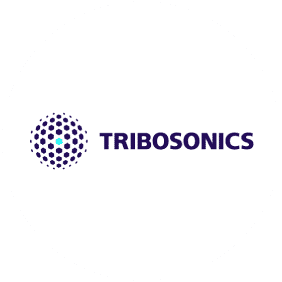Case study
Developing an IP strategy that provides maximum support for the business model
TRIBOSONICS
Impact
Support with scale up strategy
Impact
Support with scale up strategy
The challenge
Tribosonics recently transformed its business model from an R&D consultancy addressing one-off technology challenges to a more scalable strategic technology provider that builds recurring commercial value for its partners and itself. This focuses on using its proprietary sensing technology and data analytics capabilities to extract targeted data that delivers significant value.
In order to support the business model transition, the company engaged with IfM Engage to develop an IP strategy that provides maximum leverage and value capture.
The solution
IfM Engage used a unique template-based approach developed through research at the IfM’s Innovation and IP Management (IIPM) Lab. The approach, delivered through a workshop, brings together key stakeholders across an organisation to build an IP strategy that supports a firm’s business strategy through maximising value creation and capture.
To achieve the best outputs from an IP strategy workshop, ideally participants will bring expertise to cover business and financial aspects of the company’s strategic plans, financial position, an understanding of existing IP assets and how they are currently used, and relevant technologies. Ensuring people attend with knowledge across these areas is critical to the success of the workshop.
The IfM Engage’s approach to developing IP strategy has been tried and tested with more than 15 organisations, including leading industrial players in the automotive, electronics and engineering sectors, with start-ups and also governmental organisations.
Initial project
A strategic intellectual property workshop enabled Tribosonics to develop an IP strategy that is aligned to its business strategy whilst maximising value creation and capture.
Tailoring IfM tools and approaches
The one-day workshop, led by IfM Engage, involved participants from Tribosonics including the Operations Manager, Innovation Manager and Senior Technologist. Tribosonics is engaged with world-class IP Attorney Marks & Clerk, whose patent attorney also joined the workshop.
The workshop took participants through the five-step process:
1. Exploring the business model and technology strategy objectives.
Before the workshop, participants complete a template as a starting point to facilitate an effective workshop process. Details from this first step then populate the first layer of the IP strategy template.
2. Identifying business objectives that can be effectively supported by IP.
This is a crucial step that companies often find challenging, but which brings out the actual business motives for the use of IP. We employ specifically developed tools for identifying and scoring IP relevant business objectives.
3. Identifying existing and needed, internal and external ip assets that are relevant for achieving business objectives.
The identified IP assets including patents, trade secrets, copyrights, design rights and relevant foreign-owned IP, are mapped on the IP strategy template. This helps visualise whether a strategy is dominated by certain IP assets (e.g. patents, trademarks) and when the emphasis might change, e.g. as the business matures and competitive dynamics change.
4. Deciding how specific ip assets can be used effectively IP.
Assets can be used in different ways and it is of paramount importance to decide on the best way to utilise them. Patents might be used passively for defensive purposes or proactively for growing markets through carefully crafted licensing approaches. The workshop process facilities efficient decision making for the use of key IP assets.
5. Aggregate short, medium and long-term ip actions into a coherent ip strategy.
This final stage of the process helps identify when the emphasis of an IP strategy can be expected to change, for instance, from supporting the raising of capital to prevent competitive entry, to supporting a company’s international scale up ambitions. This final reflection often prompts valuable insights on the effective use of IP along the company’s growth journey.

“It was exciting for our business and our team to be working with such eminent, forward-thinking partners and collaborators in innovation and IPR, which play such an important part in our scale up strategy.”
Workshop delegate, Tribosonics

“It was exciting for our business and our team to be working with such eminent, forward-thinking partners and collaborators in innovation and IPR, which play such an important part in our scale up strategy.”
Workshop delegate, Tribosonics
About Tribosonics
Tribosonics is a transformational and growthambitious technology business that is scaling up and becoming a key player in its markets by using unique sensing technologies to generate data that enables digitisation (Industry 4.0 and IOT) to create value and enhance sustainability.
Tribosonics’ commercial strategy is to target and develop strategic collaborations with established corporates in key markets; an IP strategy is crucial to enabling this. The company continues to build a strong technology portfolio and has a structured innovation capture and IP pipeline system, from which a base patent portfolio is being constructed.
So far, this journey has seen 4 patents filed and a rapid build-up of over 20 potential patent applications. Considering the bandwidth and budget constraints of an SME undertaking an ambitious growth plan and a target of 4 patent filings per year, a solid and focused IP strategy is required.
